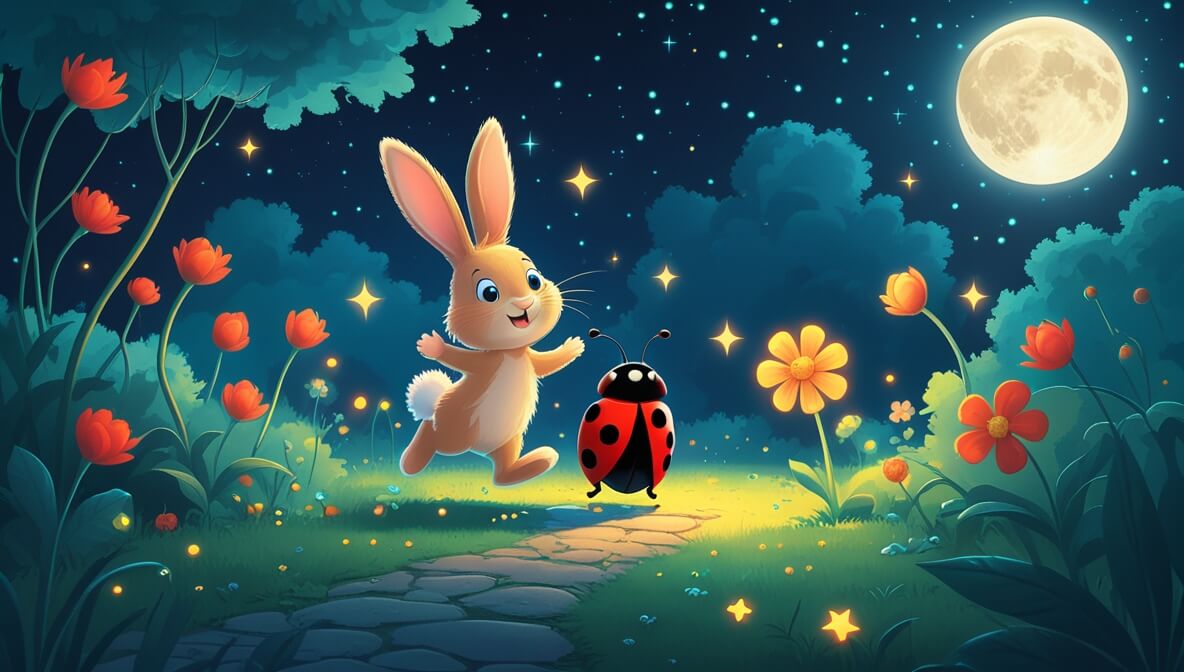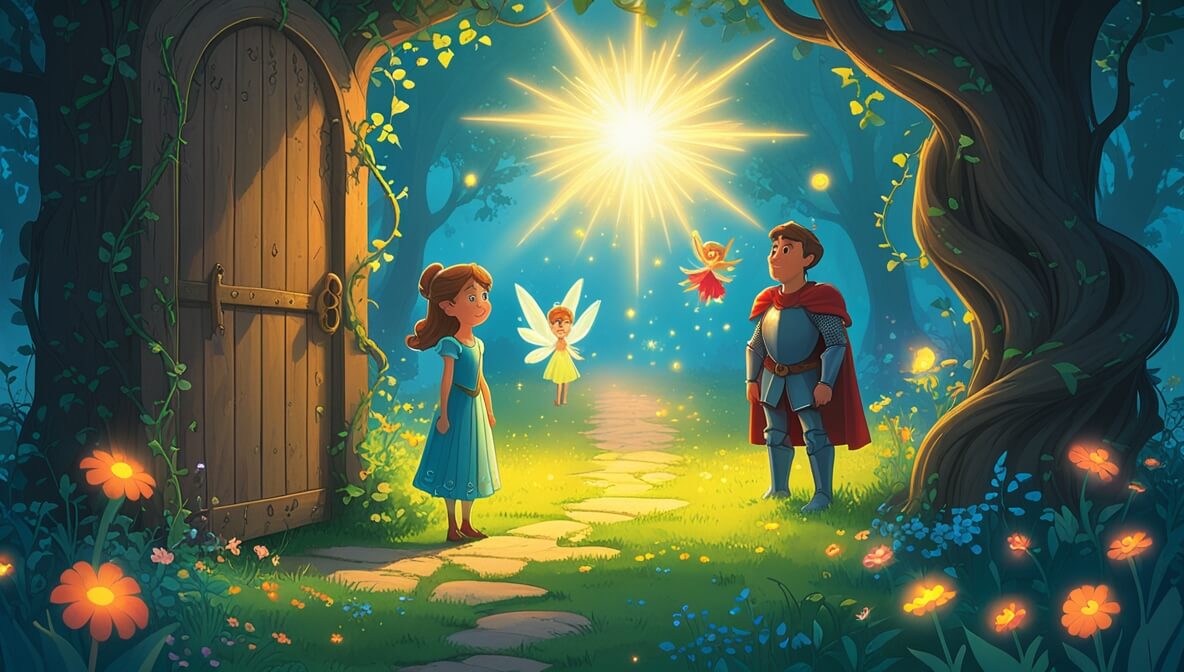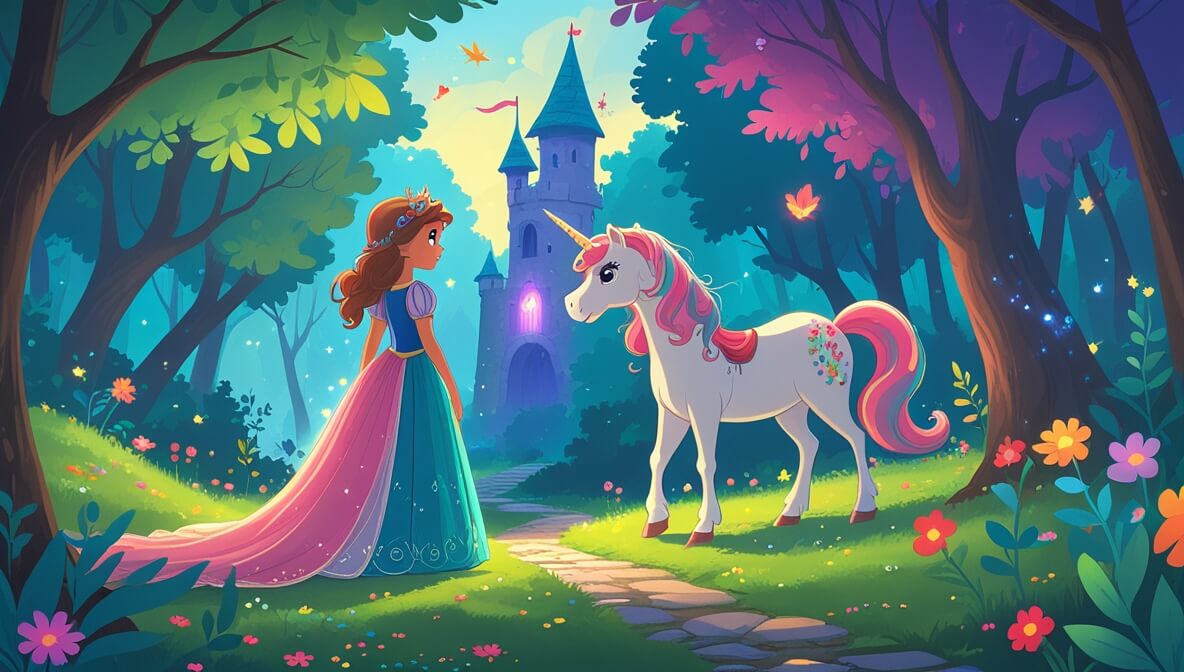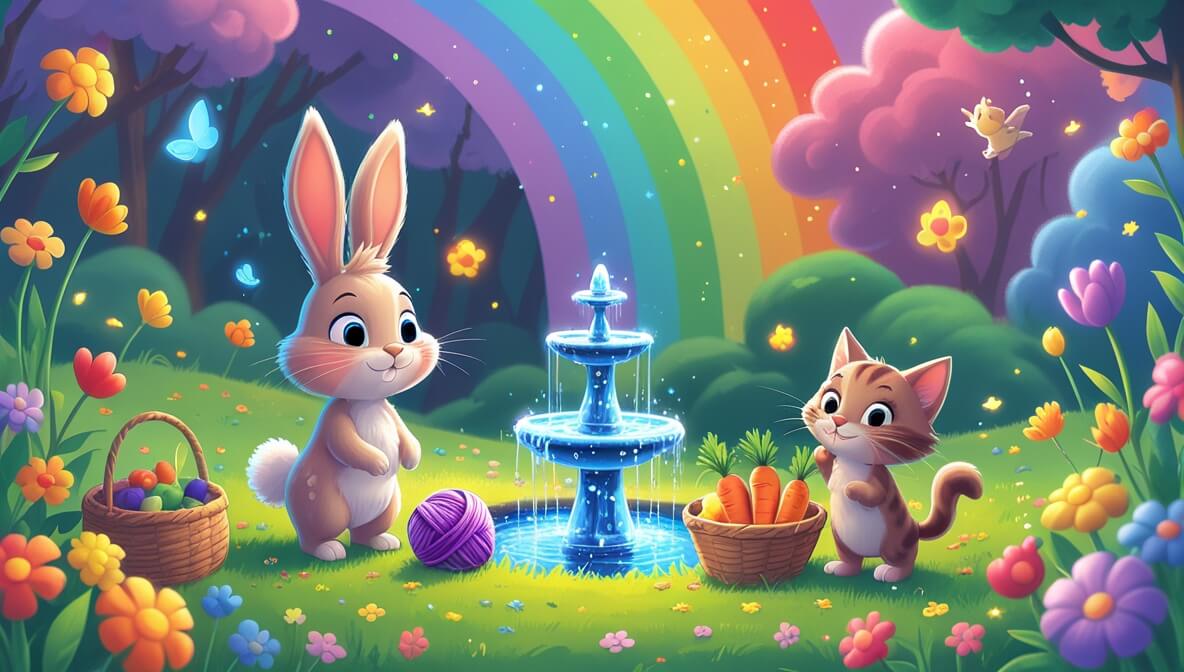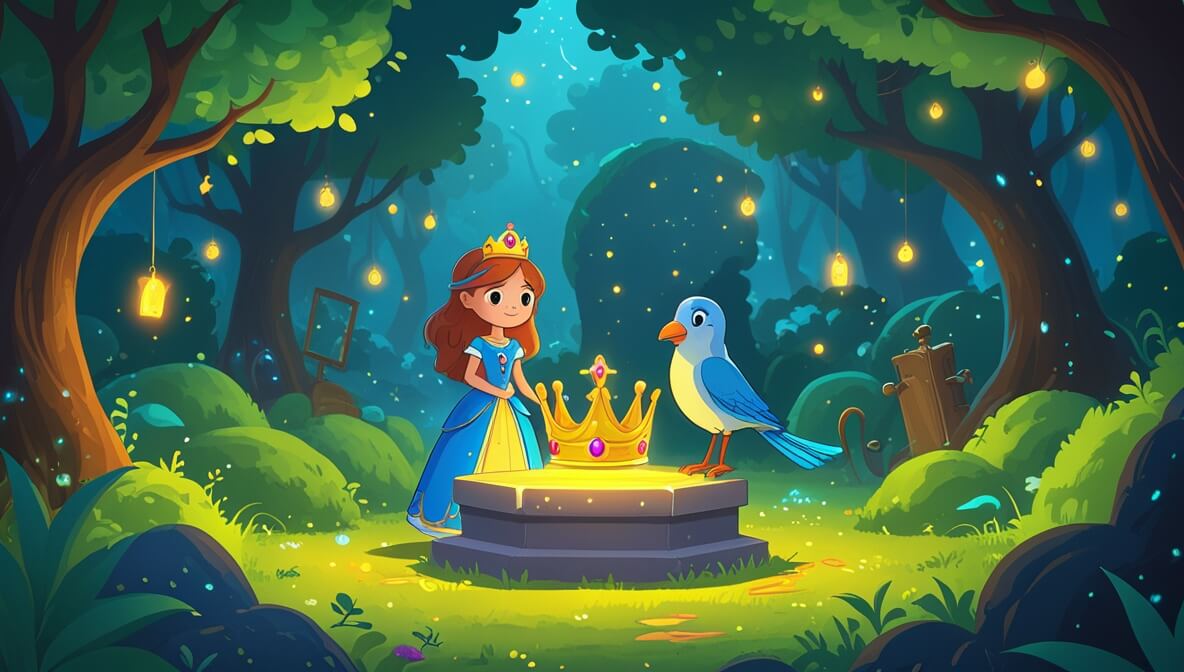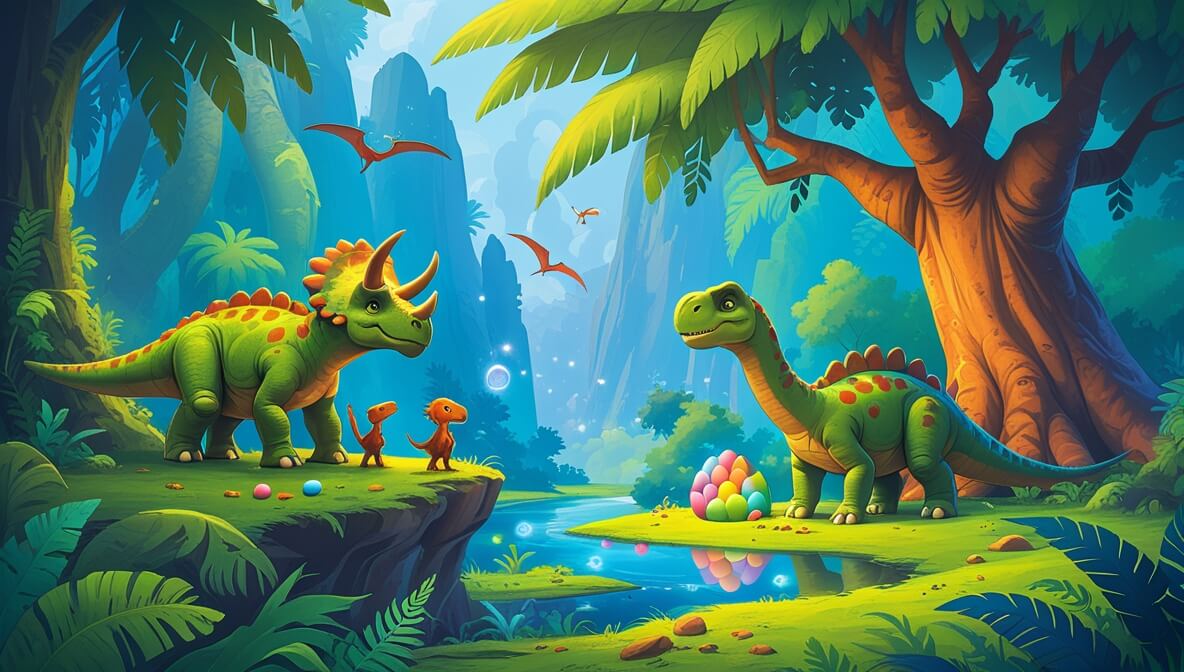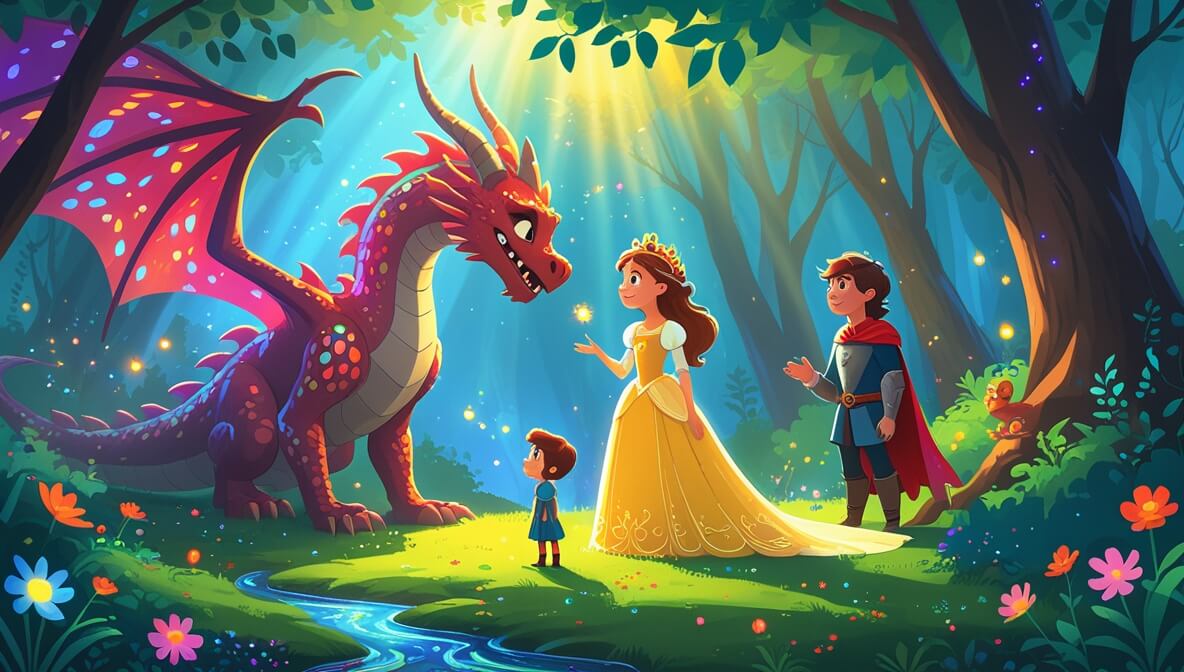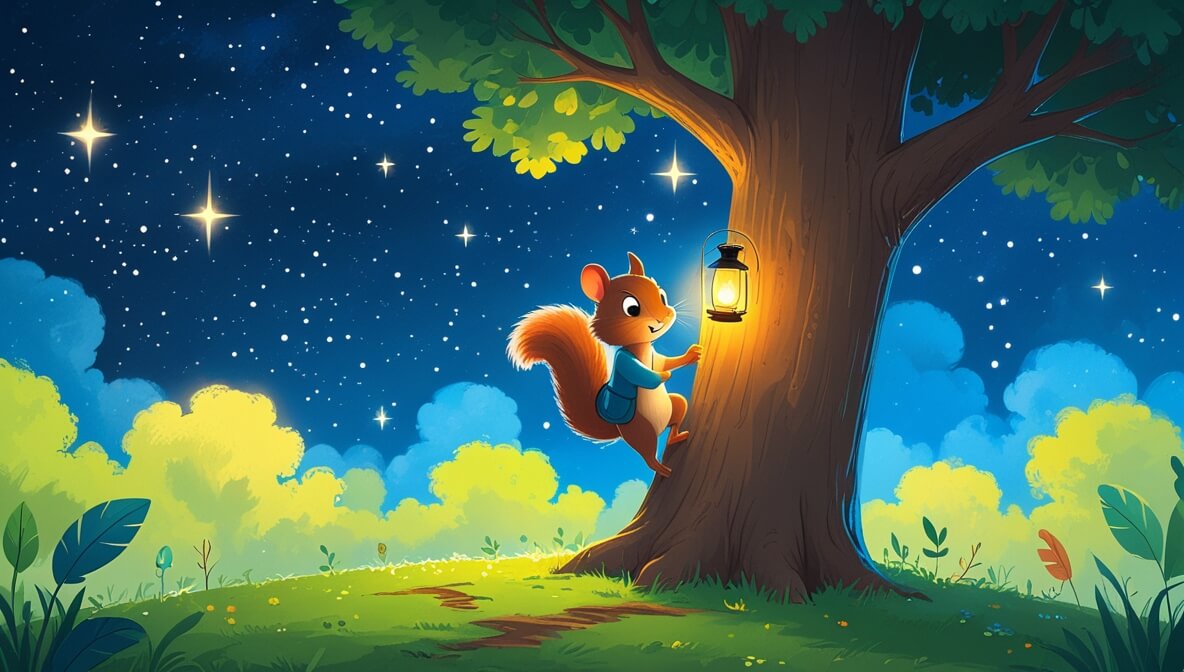In a cozy garden, a little bunny named Flopsy discovers a magical flower that glows under the moonlight. With her new friend, a curious ladybug named Dots, they embark on a nighttime adventure filled with wonder and giggles.
Age Recommendation
0 – 4 years
Characters
Characters:
- Flopsy (a curious little bunny with a fluffy tail)
- Dots (a friendly ladybug with bright red wings)
Story
In the garden, under the twinkling stars, Flopsy the bunny hopped around, her big eyes shining with excitement. She found a **glowing flower** that whispered secrets of the night. Just then, a tiny voice said, “Hello, I’m Dots, the ladybug!”
The Glowing Flower’s Secret
“This flower is magic,” said Dots, fluttering her wings. “It only shines when friends are near.” Flopsy’s heart filled with joy. “Let’s explore!” she giggled, her nose twitching with delight.
A Moonlit Adventure
As they wandered, the garden seemed to dance around them. The moonlight painted the path in silver, and Flopsy hopped with glee. Dots flew beside her, sharing stories of the stars and the whispering wind.
Homeward Bound
Finally, it was time to go home. Flopsy and Dots sat by the glowing flower, feeling warm and happy. “Thank you for the adventure,” Flopsy whispered. “Anytime,” Dots replied with a smile.
The end.
Moral of the Story
The story teaches that friendship and curiosity can lead to magical adventures, and sharing those moments makes them even more special.
Questions to Think About
- What made the flower glow in the story?
- How did Flopsy and Dots become friends?
- What kind of adventures would you like to have?
- How did the garden change at night?
- Why is it fun to explore with friends?
Do You Know
- Ladybugs can have spots of different colors, not just black!
- Some flowers really do glow at night, like the moonflower.
Word Explorer
- Glowing: Shining with a soft light.
- Adventure: A fun and exciting journey.
- Curious: Wanting to know more about something.
Emotions in the Story
- Excitement: When Flopsy found the glowing flower.
- Joy: When Flopsy and Dots explored the garden together.
- Happiness: When they sat by the flower, feeling warm inside.
Color Your Scene
Imagine Flopsy and Dots in the garden under the moonlight. Draw the glowing flower with its soft light, and color the stars in the sky. Use silver for the moon and bright red for Dots’ wings.
Parents’ Corner
This story is a great way to talk to your child about:
Friendship: Discuss how Flopsy and Dots became friends and shared a magical adventure together.
Curiosity: Encourage your child to explore the world around them, just like Flopsy did with the glowing flower.
Imagination: Inspire your child to create their own stories and adventures, fostering creativity and storytelling.
Enjoying Nature: Talk about the simple joys of being outdoors and discovering new things in the natural world.

